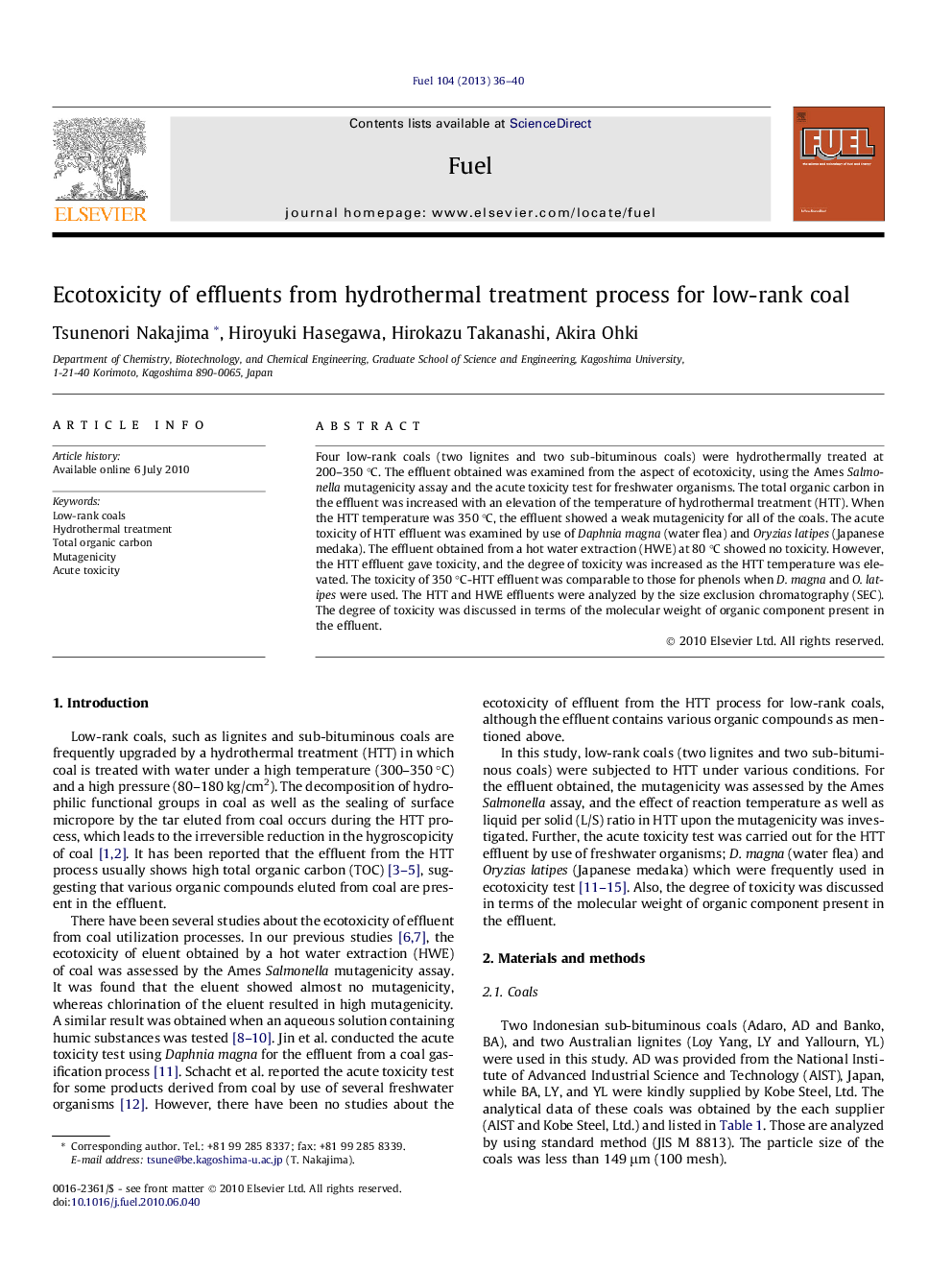| Article ID | Journal | Published Year | Pages | File Type |
|---|---|---|---|---|
| 6642640 | Fuel | 2013 | 5 Pages |
Abstract
Four low-rank coals (two lignites and two sub-bituminous coals) were hydrothermally treated at 200-350 °C. The effluent obtained was examined from the aspect of ecotoxicity, using the Ames Salmonella mutagenicity assay and the acute toxicity test for freshwater organisms. The total organic carbon in the effluent was increased with an elevation of the temperature of hydrothermal treatment (HTT). When the HTT temperature was 350 °C, the effluent showed a weak mutagenicity for all of the coals. The acute toxicity of HTT effluent was examined by use of Daphnia magna (water flea) and Oryzias latipes (Japanese medaka). The effluent obtained from a hot water extraction (HWE) at 80 °C showed no toxicity. However, the HTT effluent gave toxicity, and the degree of toxicity was increased as the HTT temperature was elevated. The toxicity of 350 °C-HTT effluent was comparable to those for phenols when D. magna and O. latipes were used. The HTT and HWE effluents were analyzed by the size exclusion chromatography (SEC). The degree of toxicity was discussed in terms of the molecular weight of organic component present in the effluent.
Related Topics
Physical Sciences and Engineering
Chemical Engineering
Chemical Engineering (General)
Authors
Tsunenori Nakajima, Hiroyuki Hasegawa, Hirokazu Takanashi, Akira Ohki,
